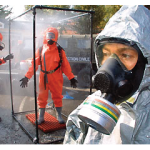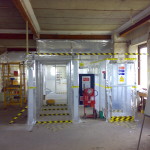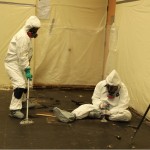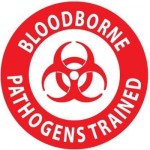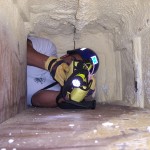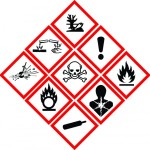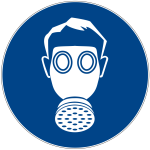The Occupational Safety & Health Act of 1970 (OSH Act) was passed to prevent workers from being killed or seriously harmed at work. The Act created the Occupational Safety and Health Administration (OSHA), which sets and enforces protective workplace safety and health standards. OSHA safety training requirements help employers provide their employees with the necessary education to work safely and prevent work-related injuries and illnesses. OSHA safety training courses are intended to minimize workplace incidents and promote a healthful and safe work environment. Employers who provide their employees with OSHA safety training often see a dramatic decline in work-related injury and illness frequency and severity rates.
[otw_shortcode_info_box border_type=”bordered” border_color_class=”otw-green-border” border_style=”bordered” shadow=”shadow-down-left” rounded_corners=”rounded-3″]

OSHA 10-Hour Construction Industry Training
This OSHA 10-Hour Construction Industry training program is intended to provide entry level construction industry workers information about their rights, employer responsibilities, as well as how to identify, abate, avoid and prevent job related hazards on a job site. The training covers a variety of construction industry safety and health hazards which a worker may encounter. Training will emphasize hazard identification, avoidance, control and prevention. Instructional time will be a minimum of 10 hours.
[/otw_shortcode_info_box]
[otw_shortcode_info_box border_type=”bordered” border_color_class=”otw-green-border” border_style=”bordered” shadow=”shadow-down-left” rounded_corners=”rounded-3″]
 OSHA 10-Hour General Industry Training
OSHA 10-Hour General Industry Training
This OSHA 10-Hour General Industry training program is intended to provide entry level general industry workers information about their rights, employer responsibilities, as well as how to identify, abate, avoid and prevent job related hazards on a job site. The training covers a variety of general industry safety and health hazards which a worker may encounter. Training will emphasize hazard identification, avoidance, control and prevention. Instructional time will be a minimum of 10 hours.
[/otw_shortcode_info_box]
[otw_shortcode_info_box border_type=”bordered” border_color_class=”otw-green-border” border_style=”bordered” shadow=”shadow-down-left” rounded_corners=”rounded-3″]
 OSHA 30-Hour Construction Industry Training
OSHA 30-Hour Construction Industry Training
The 30-hour Construction Industry training program is intended to provide a variety of training to workers with some safety responsibility. Training will emphasize hazard identification, avoidance, control and prevention. Instructional time will be a minimum of 30 hours.
[/otw_shortcode_info_box]
[otw_shortcode_info_box border_type=”bordered” border_color_class=”otw-green-border” border_style=”bordered” shadow=”shadow-down-left” rounded_corners=”rounded-3″]
 OSHA 30-Hour General Industry Training
OSHA 30-Hour General Industry Training
This course is devised specifically for foremen, supervisors, managers, safety committee members, safety staff and professionals, company owners, and others with responsibility for workplace safety in manufacturing, electrical, factory, warehouse, service industry, healthcare, storage and other general industry settings.
[/otw_shortcode_info_box]
[otw_shortcode_info_box border_type=”bordered” border_color_class=”otw-green-border” border_style=”bordered” shadow=”shadow-down-left” rounded_corners=”rounded-3″]
 OSHA HAZWOPER 40-Hour Initial Training
OSHA HAZWOPER 40-Hour Initial Training
This Hazardous Waste Operations and Emergency Response – HAZWOPER – 40 Hour initial course is required for individuals who will be performing hazardous waste operations and emergency response duties at hazardous waste sites. This OSHA HAZWOPER 40-Hour initial course complies with Federal OSHA regulation 29 CFR 1910.120 and provides the participant with initial HAZWOPER certification.
[/otw_shortcode_info_box]
[otw_shortcode_info_box border_type=”bordered” border_color_class=”otw-green-border” border_style=”bordered” shadow=”shadow-down-left” rounded_corners=”rounded-3″]
 OSHA HAZWOPER Refresher Training
OSHA HAZWOPER Refresher Training
This OSHA HAZWOPER training refresher course covers the following operations: clean-up operations required by governmental bodies at uncontrolled hazardous waste sites; clean-up operations at sites covered by the Resource Conservation and Recovery Act (RCRA); voluntary clean-up operations at uncontrolled hazardous waste sites; hazardous waste operations at treatment, storage, and disposal facilities; and emergency response operations for releases of, or substantial threats of release of, hazardous substances without regard to the location of the hazard.
[/otw_shortcode_info_box]
[otw_shortcode_info_box border_type=”bordered” border_color_class=”otw-green-border” border_style=”bordered” shadow=”shadow-down-left” rounded_corners=”rounded-3″]
 OSHA Asbestos Awareness Class IV Training
OSHA Asbestos Awareness Class IV Training
Designed for custodial and maintenance individuals who work in buildings with asbestos-containing materials (ACM). This course provides a basic understanding of asbestos, the health effects associated with exposure, locations of ACM in buildings and how to recognize and control damaged ACM.
[/otw_shortcode_info_box]
[otw_shortcode_info_box border_type=”bordered” border_color_class=”otw-green-border” border_style=”bordered” shadow=”shadow-down-left” rounded_corners=”rounded-3″]
 OSHA Asbestos Operations and Maintenance Class III Training
OSHA Asbestos Operations and Maintenance Class III Training
Designed for custodial and maintenance individuals who perform duties where asbestos-containing material (ACM) is likely to be disturbed. This course includes hands-on activities and provides an in depth understanding of asbestos, health effects, personal protective equipment, work practices and regulatory requirements.
[/otw_shortcode_info_box]
[otw_shortcode_info_box border_type=”bordered” border_color_class=”otw-green-border” border_style=”bordered” shadow=”shadow-down-left” rounded_corners=”rounded-3″]
 OSHA Bloodborne Pathogens Training
OSHA Bloodborne Pathogens Training
Designed for all individual who have a reasonable chance of coming into contact with blood or bodily fluids during the normal course of the workday. This course provides a detailed understanding of bloodborne pathogens, how bloodborne pathogens are spread, universal precautions and exposure control methods.
[/otw_shortcode_info_box]
[otw_shortcode_info_box border_type=”bordered” border_color_class=”otw-green-border” border_style=”bordered” shadow=”shadow-down-left” rounded_corners=”rounded-3″]
 OSHA Confined Spaces Training
OSHA Confined Spaces Training
Designed for individuals who may enter tanks, pits, vaults, tunnels, silos or other confined spaces. This course provides detailed requirements for safe work practices and procedures to protect employees from the hazards of entry into permit-required confined spaces.
[/otw_shortcode_info_box]
[otw_shortcode_info_box border_type=”bordered” border_color_class=”otw-green-border” border_style=”bordered” shadow=”shadow-down-left” rounded_corners=”rounded-3″]
 OSHA Ergonomics Training
OSHA Ergonomics Training
Designed for any individual who would like to improve the work environment to better “fit” their needs. This course provides detailed information on ergonomics, musculoskeletal disorders, self-assessment opportunities, emerging trends and prevention techniques.
[/otw_shortcode_info_box]
[otw_shortcode_info_box border_type=”bordered” border_color_class=”otw-green-border” border_style=”bordered” shadow=”shadow-down-left” rounded_corners=”rounded-3″]
 OSHA Hazard Communications – Globally Harmonized System Training
OSHA Hazard Communications – Globally Harmonized System Training
Designed for individuals who may the potential of exposure to a chemical or hazardous substance while performing assigned tasks during the normal course the work day. This course, also referred to “Right To Know”, provides detailed information on hazard communication including the Globally Harmonized System (GHS) of chemical classification and labeling.
[/otw_shortcode_info_box]
[otw_shortcode_info_box border_type=”bordered” border_color_class=”otw-green-border” border_style=”bordered” shadow=”shadow-down-left” rounded_corners=”rounded-3″]
 OSHA Hazardous Energy Lock Out – Tag Out Training
OSHA Hazardous Energy Lock Out – Tag Out Training
Designed for individuals who may be exposed to injuries from the unexpected energization, startup, or release of stored energy while performing service or maintenance on machinery and equipment. This course provides detailed information types of energy, roles and responsibilities, lockout/tagout (LO/TO) and other the critical components required to effectively remove stored hazardous energy from equipment and machinery.
[/otw_shortcode_info_box]
[otw_shortcode_info_box border_type=”bordered” border_color_class=”otw-green-border” border_style=”bordered” shadow=”shadow-down-left” rounded_corners=”rounded-3″]
 OSHA Hearing Conservation Training
OSHA Hearing Conservation Training
Designed for individuals who may for all individuals who are exposed to hazardous noise on the job. This course provides detailed information on hearing conservation safety including understanding the effects of noise, hearing protection and noise avoidance.
[/otw_shortcode_info_box]
[otw_shortcode_info_box border_type=”bordered” border_color_class=”otw-green-border” border_style=”bordered” shadow=”shadow-down-left” rounded_corners=”rounded-3″]
 OSHA Protective Equipment Training
OSHA Protective Equipment Training
Designed for individuals who perform tasks which require the use personal protective equipment (PPE). This course provides detailed information on proper selection, care, and use of PPE including general protection, head protection, eye and face protection, respiratory protection, hand protection and foot protection.
[/otw_shortcode_info_box]
[otw_shortcode_info_box border_type=”bordered” border_color_class=”otw-green-border” border_style=”bordered” shadow=”shadow-down-left” rounded_corners=”rounded-3″]
 OSHA Respiratory Protection Training
OSHA Respiratory Protection Training
Designed for individuals who are required to wear respiratory protection while performing assigned tasks in dangerous work environments. This course provides detailed information respiratory hazards, respirator types, protection factors, fit testing, selection, care and maintenance of respiratory protection.
[/otw_shortcode_info_box]
Your Responsibility as an Employer
Employers are required to keep their workplace free of serious hazards and follow all OSHA safety training requirements. OSHA requires employers to try to reduce or eliminate hazards first by making changes in the workplace. OSHA safety training requirements include the use of engineering controls such as ventilation as a first measure of prevention, administrative controls such as limiting time to a certain exposure as a second measure, and personal protective equipment such as using respirator protection as a final measure. Employers must inform employees about workplace hazards through OSHA safety training, labels, placards, alarms and other methods.
Types of OSHA Safety Training Requirements
OSHA safety training requirements describe specific approaches employers must follow to protect their employees from work place hazards. There are different OSHA safety training requirements for different industries which include Construction, Agriculture, Maritime, and General Industry. The General Industry OSHA safety training requirements apply to most employers, however, there is often overlap with one of the other industry OSHA safety training requirements.
OSHA safety training requirements are designed to limit employee exposure to hazardous chemicals, substances and activity in the work environment. Examples of OSHA safety training requirements include asbestos safety training, bloodborne pathogens safety training, confined space safety training, fall protection safety training, hazard communication safety training and personal protective equipment safety training. In the event there is no specific OSHA safety training requirement for an identified workplace hazard, employers are required to comply with OSHA’s General Duty Clause. This clause requires employers to keep their workplace free of serious recognized hazards and may require the use of uniquely developed OSHA safety training requirements.
Knowing the Risks Involved
Workplace incidents often include: damage to equipment, product, and the facility; personal injury and illness to employees and the public; and unfortunately sometimes fatality. As an employer, understanding your workplace hazards and following OSHA safety training requirements can help you minimize your company’s risk.
Knowing the Cost
Unfortunately, when workplace incidents occur, they can have negative consequences that are detrimental to an organization. Incidents, even minor ones, typically have direct and/or indirect costs. Direct costs are easily measured and include regulatory fines, lost time, medical expenses, physical damage and increase workers’ compensation premiums. Indirect expenses are more difficult to measure and include loss of productivity, time filling out incident paperwork, hiring new employees and providing orientation and OSHA safety training to new employees. Direct and indirect expenses associated with workplace incidents add unnecessary costs to employers and can lower profit significantly. Being proactive and following all OSHA safety training requirements is key to preventing workplace incidents from occurring to help maximize your company’s profit.
Avoiding the Consequences
Organizations that do not comply with OSHA safety training requirements dramatically increase their risk of workplace incidents and often experience associated costs including regulatory penalties, fines and business closure. While workplace incidents may never be fully avoidable, they can be dramatically reduced by following OSHA safety training requirements. It is vital for all employees to have an in-depth understanding of how to do their jobs safely and efficiently in order to minimize incidents. OSHA safety training equips employers and employees with the knowledge and skill necessary to recognize workplace hazards and prevent incidents from occurring.





